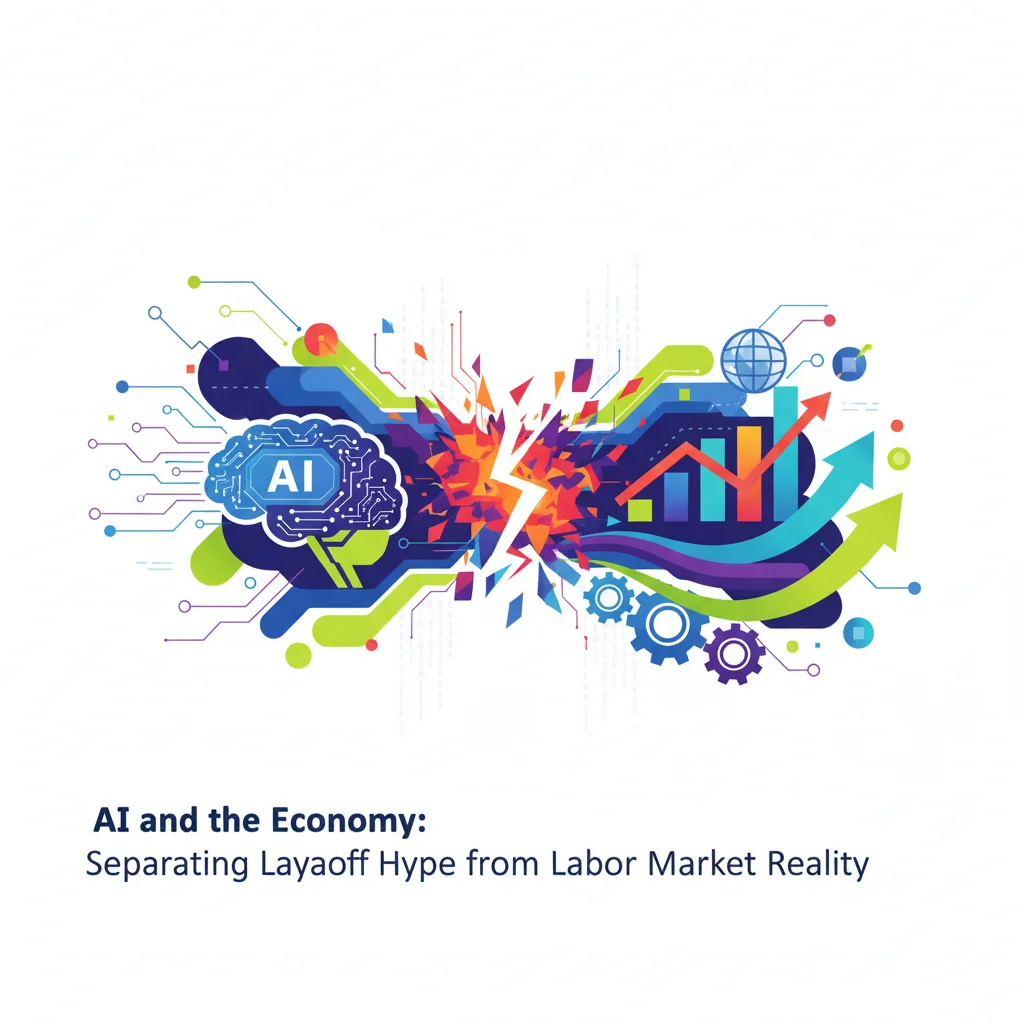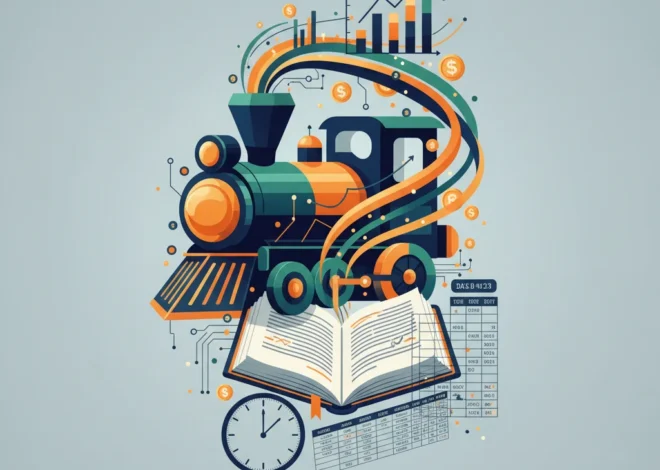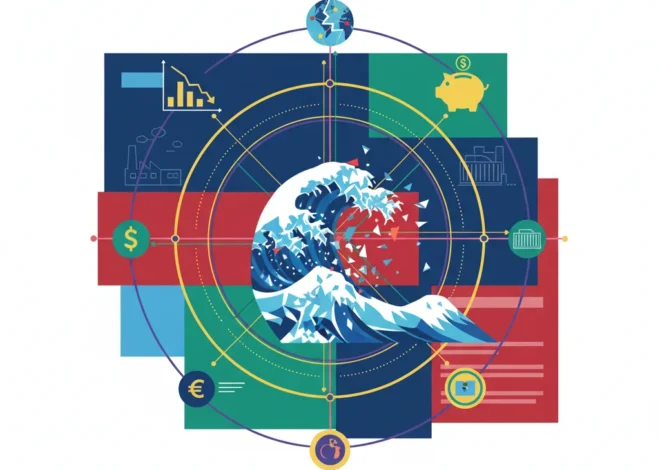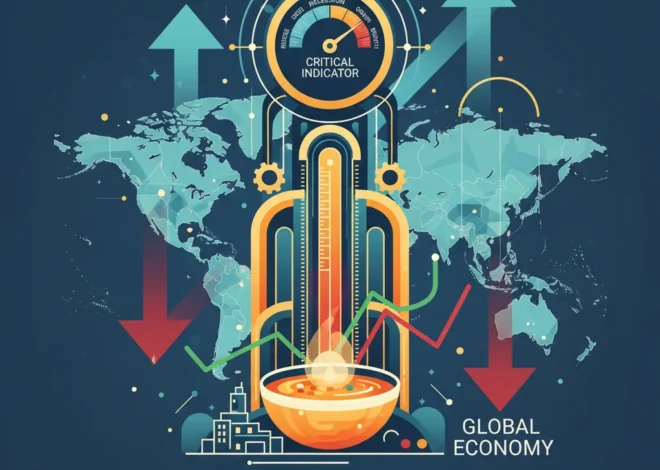
AI and the Economy: Separating Layoff Hype from Labor Market Reality
The AI Job Apocalypse: Are the Robots Really Coming for Your Desk?
When a titan like Amazon announces layoffs, the shockwaves are felt far beyond its corporate headquarters. The latest round of cuts, particularly within its AWS division, immediately fed into a narrative that has been simmering for months: the great AI-driven job replacement has begun. Headlines buzzed, and a collective anxiety rippled through the professional world. But as investors and business leaders know, the headline rarely tells the whole story. The crucial question we must ask is not *if* AI will change the job market, but *how*—and whether current layoffs are a true signal of that change.
While it’s easy to point to artificial intelligence as the futuristic culprit for today’s job cuts, a deeper analysis reveals a far more complex economic tapestry. Scepticism is growing that these layoffs are less about a sudden AI takeover and more about a confluence of traditional economic pressures, post-pandemic market corrections, and strategic repositioning by corporations under the watchful eye of the stock market. This post will dissect the narrative, explore the underlying economic drivers, and provide a nuanced perspective on what the rise of AI truly means for the future of work, finance, and investing.
Deconstructing the Narrative: More Than Meets the AI
The tech industry has been a whirlwind of downsizing over the past 18 months. Amazon’s recent cuts are just one chapter in a much larger book. Companies like Google, Meta, and Microsoft have all shed significant portions of their workforce. The easy explanation, and the one that grabs the most attention, is that these companies are trimming human staff to make way for hyper-efficient AI. However, this simplistic view ignores the potent economic headwinds that have been battering the sector.
For years, fueled by low-interest rates, the tech world experienced a period of unprecedented growth and hiring. The pandemic only accelerated this, as demand for digital services soared. Now, the macroeconomic climate has shifted dramatically. With higher interest rates, the cost of capital has increased, and investors are demanding not just growth at all costs, but a clear path to profitability and efficiency. This pressure from the financial markets is a primary driver of the current “year of efficiency,” a term famously coined by Meta’s Mark Zuckerberg. A recent report from the World Economic Forum highlights that while technology adoption is a major driver of business transformation, broader economic challenges like slower growth and inflation are equally significant factors in business strategy today (source).
In this context, AI serves a dual purpose. It is both a genuine area for future investment and a convenient public-facing justification for difficult, cost-driven decisions. Attributing layoffs to a forward-looking AI strategy sounds far more innovative and palatable to investors than admitting to over-hiring during a boom cycle or succumbing to recessionary fears.
Hollywood's High-Stakes Gamble: Why a Warner Bros. Discovery Sale Could Reshape the Media Universe
The True Impact: Augmentation, Not Annihilation
The real story of AI in the workplace is not one of outright replacement, but of profound augmentation. A landmark study by Goldman Sachs projected that while generative AI could expose the equivalent of 300 million full-time jobs to automation, it would also drive a 7% increase in global GDP over a decade (source). This highlights the dual nature of the technology: it displaces tasks, but it also creates immense economic value and, subsequently, new opportunities.
Consider the world of finance and fintech. AI algorithms have been used in high-frequency trading for years, but generative AI is now poised to revolutionize other areas of banking and investing. An analyst’s job might shift from manually gathering data and building financial models to supervising an AI that does the grunt work in seconds. The analyst’s value then moves up the chain to interpretation, strategic thinking, and client relations—skills that are far harder to automate.
This “task-based” automation is a critical distinction. Very few jobs are a single, monolithic task. Most are a collection of dozens of smaller tasks. AI will likely automate the repetitive, data-intensive parts, freeing up human workers to focus on creativity, critical thinking, and empathy. The table below illustrates this shift, contrasting tasks at risk with the emerging skills and roles that will define the new economy.
Projected Shifts in the Labor Market due to AI & Automation
| Tasks/Roles with High Automation Potential | Emerging Skills & New Roles |
|---|---|
| Data Entry and Processing | AI & Machine Learning Specialists |
| Basic Customer Service Inquiries | AI Ethics and Governance Officers |
| Routine Administrative Support | Prompt Engineers |
| Standardized Report Generation | Data Storytellers and Visualization Experts |
| Code Generation for Simple Functions | AI-Human Interaction Designers |
This transition underscores the urgency for reskilling and upskilling initiatives. The jobs of tomorrow will require a partnership with technology, and the workforce must be prepared for this new paradigm. As the BBC article notes, there is a clear divide, with some seeing AI as a tool for “supercharging” workers rather than replacing them (source).
A Guide for Investors and Leaders in the AI Era
Navigating this technological shift requires a sophisticated approach from both corporate leaders and the investment community. The knee-jerk reaction is to either panic about disruption or become euphoric about productivity, but the optimal path lies in a balanced, strategic analysis.
For the Investor:
Evaluating a company’s AI strategy goes beyond listening to buzzwords on an earnings call. Look for tangible evidence of AI integration that drives top-line growth, not just bottom-line cost savings. Is the company using AI to create new products, enter new markets, or enhance customer experience? A company that is merely using AI as a pretext to cut its sales team may be in trouble, while one using AI to make its sales team more effective is likely a long-term winner. The impact of this on the stock market will be a gradual separation of companies that successfully leverage financial technology and AI from those that don’t. This is not unlike the early days of the internet, where true value was created by companies that built new business models, not just those that built a basic website.
For the Business Leader:
The primary focus must be on workforce transformation. A company’s greatest asset is its human capital, and the greatest risk of the AI revolution is not investing in it. This means creating robust training programs to help employees transition from automatable tasks to higher-value responsibilities. It also means fostering a culture of continuous learning and adaptation. Furthermore, leaders must consider the ethical implications of deploying AI, ensuring that efficiency gains do not come at the cost of fairness, transparency, and trust. While AI is a powerful tool, it’s worth remembering other transformative technologies like blockchain, which have had a much more complex and drawn-out adoption cycle, reminding us that technological implementation is a marathon, not a sprint.
Beyond the Bureaucracy: How Scrapping Red Tape Could Redefine the UK's Economic Future
The Macroeconomic Horizon: A Productivity Boom?
From a broader economics perspective, AI has the potential to solve one of the biggest puzzles of the last two decades: stagnant productivity growth. Major technological revolutions of the past—the steam engine, electricity, the computer—all ushered in decades of soaring productivity and rising living standards. Many economists believe AI could be the catalyst for the next great productivity boom.
If AI can accelerate drug discovery, optimize global supply chains, create more efficient energy grids, and personalize education, the benefits to the global economy would be immense. However, this optimistic outlook comes with a significant caveat: the distribution of these gains. Without proactive policies regarding education, social safety nets, and taxation, there is a substantial risk that the economic benefits of AI will be concentrated at the very top, exacerbating wealth inequality.
The conversation, therefore, must move beyond a simple fear of job cuts. It must evolve into a serious discussion about how we can structure our economy and society to ensure that the prosperity generated by artificial intelligence is shared broadly. This is the central challenge for policymakers, business leaders, and citizens in the coming decade.
Conclusion: Beyond the Hype
The recent Amazon layoffs, while unsettling for those affected, are not the definitive starting gun for the AI job apocalypse. They are, instead, a symptom of a complex economic moment where cyclical business pressures are intersecting with a profound technological shift. AI is being used as a convenient narrative for cost-cutting today, but its real impact will be a much deeper, more gradual reshaping of roles and industries tomorrow.
For investors, professionals, and leaders, the key is to look past the headlines. The critical task is not to fear the future of work but to actively build it. This involves investing in human capital, fostering adaptive skills, and demanding a strategic approach to technology that prioritizes long-term value creation over short-term efficiency gains. The AI revolution is here, but its story is not one of simple replacement. It is a complex tale of transformation, and those who understand its nuances will be the ones who thrive.


